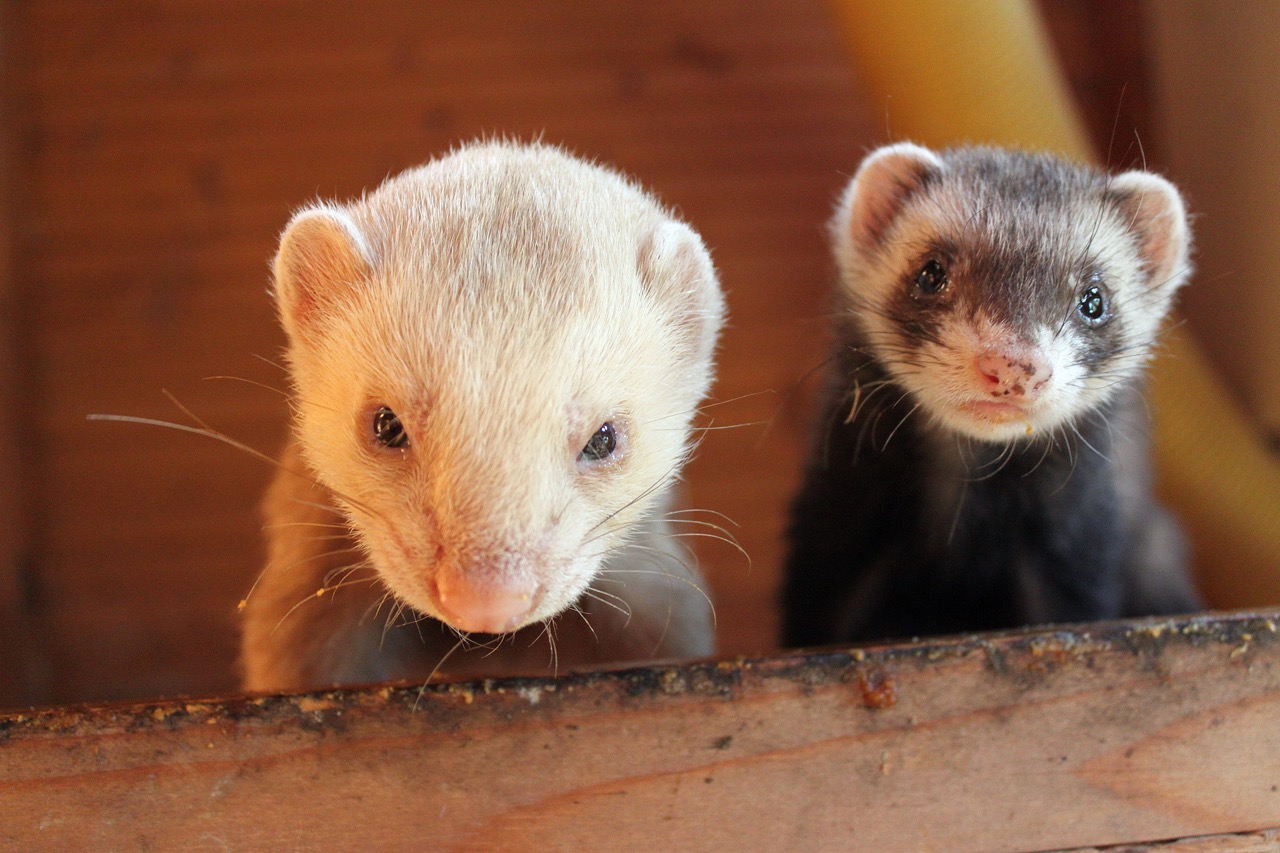Organizing a ferret’s cage effectively can significantly enhance their living environment, ultimately leading to better health and happiness. Ferrets are playful and curious creatures that require adequate space for exercise, exploration, and rest. Proper cage organization not only maximizes the available area but also creates a stimulating environment tailored to their unique needs. In this article, we will explore how to best organize your ferret’s cage for maximum space and enriched living.
Understanding Your Ferret’s Natural Habitat Needs
Ferrets are naturally active animals that thrive in expansive and varied environments. In the wild, they would roam through burrows and explore diverse terrains. This instinctive behavior should be mirrored in their cage setup. A ferret’s living space should reflect their need for climbing, hiding, and interacting with toys. Understanding these natural habitat needs is crucial for creating a fulfilling space that allows them to express their natural behaviors.
Ferrets require both horizontal and vertical space. They are agile climbers, and vertical areas like shelves or hammocks can satisfy their climbing instincts while maximizing floor space. When considering your ferret’s cage, it’s important to choose an enclosure that provides enough room to accommodate multiple levels, allowing them to explore different heights. A spacious cage can help prevent boredom and promote physical activity, which is essential for their overall well-being.
Additionally, consider the social aspect of ferrets. These animals are highly social creatures that enjoy interacting with their companions, whether human or fellow ferrets. Incorporating ramps or tunnels will facilitate social interaction by allowing them to traverse their environment more freely. Understanding their habitat needs is the first step towards creating an organized and enriching living space that caters to their instincts and behaviors.
Essential Cage Features for Optimal Ferret Living Space
When setting up a cage for ferrets, certain features are essential to provide an optimal living space. First and foremost, ensure that the cage is constructed from durable materials that can withstand the ferret’s inquisitive nature. The bars should be spaced tightly enough to prevent escape, while the dimensions should be spacious enough to allow for movement and play. A good rule of thumb is to have a cage that is at least 36 inches long, 24 inches wide, and 36 inches high for a single ferret, with larger dimensions for multiple ferrets.
Shelving is another crucial feature for maximizing space. Multi-level cages with shelves, ramps, and tunnels can provide various areas for exploration and activity. It’s best to include a mix of open and enclosed spaces, such as hammocks and hideaways, to give your ferret a sense of security. Additionally, having multiple access points ensures that you can reach in easily for cleaning or handling, which helps maintain a stress-free environment.
Finally, it’s essential to incorporate enrichment features, such as toys and climbing structures, that can be stored within the cage. Look for items that can be hung or attached to the walls, which saves floor space and encourages active play. Soft bedding materials and litter boxes should also be considered to create a comfortable and clean living area. By incorporating these essential features, you ensure a functional and engaging environment for your ferret.
Creative Arrangement Tips for Space-Saving Solutions
To further maximize your ferret’s cage space, think creatively about how you arrange items within it. Utilize vertical space by adding shelves or platforms at different levels, ensuring there’s enough height for your ferret to explore while maintaining a balance to prevent over-crowding. Opt for corner shelving units that can fit snugly in the cage without taking up too much usable floor area. This not only increases the play area but also provides various vantage points for your ferret to observe their surroundings.
Another effective space-saving solution involves using hanging toys and accessories. Many ferret toys are designed to be hung from the top of the cage, keeping the floor area clear for activities. Consider using fabric hammocks or tunnels that can be secured to the cage walls, creating cozy spots for resting without taking up valuable space. Soft fabric toys or chew items can also be suspended, encouraging your ferret to jump and climb while promoting mental stimulation.
Lastly, consider modular designs for your cage setup. If your ferret enjoys specific toys or accessories, use stackable bins or containers to store them in the cage. This allows you to rotate toys regularly, keeping the environment dynamic and exciting for your ferret. By thinking creatively about arrangement and storage, you can create a more functional and enjoyable habitat that maximizes the available space.
Maintaining a Clean and Engaging Environment for Ferrets
Regular maintenance is key to providing a clean and engaging environment for your ferrets. Ferrets can be prone to odors, and their living space should be cleaned consistently to prevent any buildup. A weekly deep clean of the cage, including changing bedding, washing toys, and disinfecting surfaces, helps maintain hygiene and keeps your ferret healthy. Daily spot cleaning of litter areas is also essential to minimize smells and ensure a comfortable living space.
In addition to cleanliness, keeping your ferret engaged is vital for their mental health. Rotating toys and rearranging the cage layout can prevent boredom. Try introducing new interactive toys or puzzle feeders that challenge their intellect and promote physical activity. Regularly testing out new arrangements and features can provide a fresh perspective for both you and your ferret, making the space feel new and interesting.
Lastly, consider the placement of the cage in your home. Avoid placing it in areas with direct sunlight or drafts, as this can impact your ferret’s comfort. Instead, place the cage in a quiet, low-traffic area where your ferret can interact with family members while still having a sense of security. By maintaining cleanliness and engagement, and by thoughtfully considering the cage’s placement, you create a nurturing environment that supports your ferret’s health and happiness.
Organizing your ferret’s cage for maximum space is an essential aspect of responsible pet ownership. By understanding their natural habitat needs, incorporating essential features, utilizing creative arrangement tips, and maintaining a clean and engaging environment, you can significantly enhance your ferret’s quality of life. A well-organized cage not only allows your ferret to thrive but also strengthens the bond you share as a caring owner. With thoughtful planning and regular maintenance, you can create a safe, stimulating, and enjoyable space for your beloved ferret.










